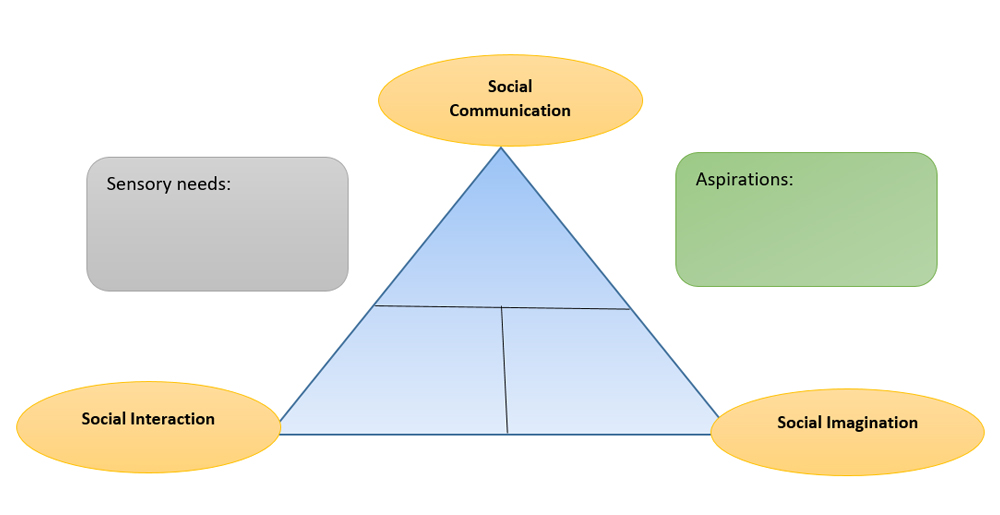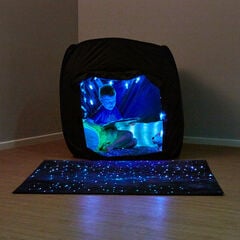One of the most interesting things about having a child who has autism is other people’s reaction to the word for it. If and when I share that my child has autism I’m greeted with everything from ‘That’s such a shame!’ to ‘Wow…what’s his special skill?’ (we usually explain that he can turn invisible) and ‘You can’t tell that he’s different.’ Although I don’t think that any of the comments are designed to cause offence or upset I do think that they are steeped in age old stereotypes and an expectation that many autistic people are the same. My experience of having an autistic child and teaching many amazing autistic individuals over the last twenty years is that no two autistic people are ever the same. In fact, the word autism has many remarkable possibilities.
When I have had the pleasure and the privilege of having an autistic pupil in my class I have spent a great deal of time getting to know the child as an individual and learning what their autism means for them and how it impacts upon their daily lives.
To do this I have worked with the pupil to complete their own autism triad:

Using the triad, we explore the pupil’s strengths in all of the areas of their personal triad and identify the skills that they feel that they would like to develop further. This is a working document that is constantly revised and revisited as the pupil develops. It never looks neat and is never finished – it grows with the child. I have found that this document helps me to provide an important enhancement to the subject based curriculum delivered through our usual classroom lessons. It aids me to design a more bespoke offering that offers an autism specific curriculum matched to the individual’s autism and build in many incidental learning opportunities outside of the classroom. It also helps me to understand what the child’s autism is like for them.
The most powerful example I can think of for the use of the triad was when a pupil shared his with a teaching assistant. Using his triad, he explained how he loved creative writing and didn’t really have a special interest as such like some of his other autistic friends. He also shared that he didn’t really like being on his own and was sad that others thought that he did so left him alone. He wanted to make some friends but wasn’t sure how to do it. The teaching assistant responded by giving him a big cuddle and telling him that she had never realised this. She thought being alone and having a special interest was ‘what autistic people did.’ Now she knows differently. My favourite part of this story was when the teaching assistant told me how pleased she was that the pupil had shared his version of autism with her. She told me: ‘He is just full of possibilities!’
Resources to support Autism
We understand the importance of your classroom being an educational place for all ages, abilities and needs. Our extensive collection of autism resources provide you with the tools you need to make your teaching space a welcoming and accommodating environment for all your students. From activities aimed to encourage talking about feelings and emotions through to communication aids, our selection of autism resources for schools is designed to support your students on the autism spectrum.

View resources that support Autism here
This article has been written by Beccie Hawes

Beccie has worked in all aspects of Special Educational Needs including mainstream, additionally resourced provision and specialist settings. She has extensive experience as a SENCo, Inclusion Manager, Lead Local Authority SEND Advisory Teacher and has set up and led an inclusion advisory service.
Beccie is currently proud to be the Head of Service with Cadmus Inclusive, part of Cadmus Services, which is based in Walsall. This service has a national reach and actively supports schools with all aspects of providing a high quality education for vulnerable learners. Beccie is the author of ‘The Complete Dyslexia Toolkit’ and co-author of ‘Getting it Right for SEND’ and ‘How to Create the Perfect Partnership with Parents’. Beccie also writes the national Ebriefing: SEND Bitesize. She has developed a number of educational resources to support learners which schools across the UK have purchased and use. Beccie remains very ‘hands on’ in the classroom and is passionate about being at the chalk face to support teachers and children to think differently for a brighter tomorrow. She is also the mum to four boys and a dog.





